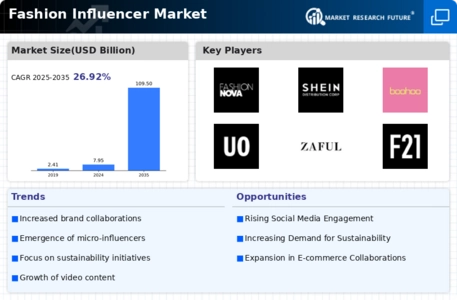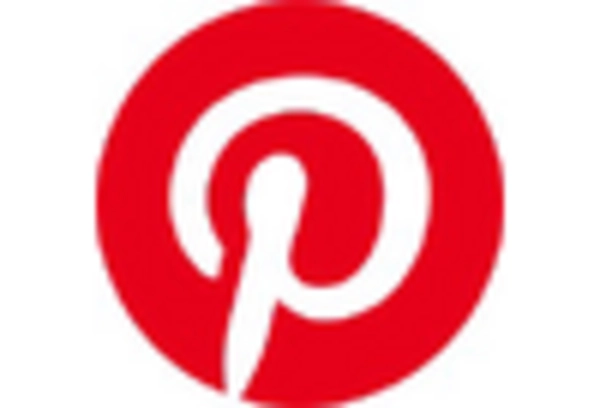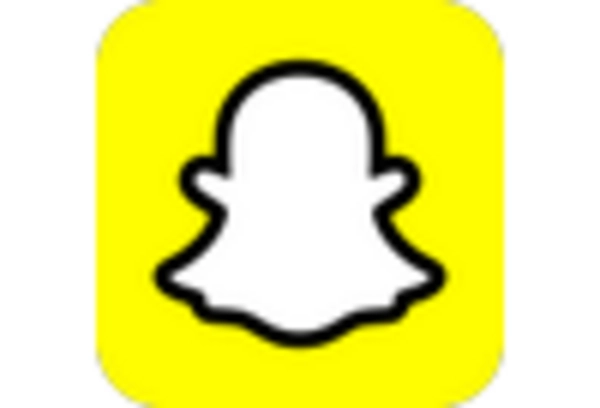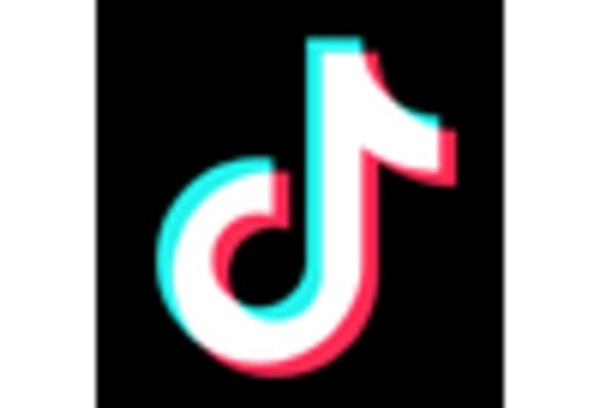Emergence of Niche Markets
The Fashion Influencer Market is witnessing the emergence of niche markets, driven by diverse consumer interests and preferences. Influencers specializing in specific fashion segments, such as sustainable fashion, plus-size clothing, or streetwear, are gaining traction. This trend reflects a broader societal shift towards inclusivity and representation in fashion. As of 2025, niche influencers are reported to have higher engagement rates, as they cater to specific audiences with tailored content. Brands are recognizing the potential of collaborating with niche influencers to reach targeted demographics effectively. This strategy not only enhances brand visibility but also fosters a sense of community among consumers. The rise of niche markets is expected to continue, shaping the future landscape of the Fashion Influencer Market.
Rise of Social Media Platforms
The proliferation of social media platforms has transformed the Fashion Influencer Market. Platforms such as Instagram, TikTok, and Pinterest have become essential for influencers to showcase their fashion choices and engage with audiences. As of 2025, approximately 80% of consumers report discovering new fashion brands through social media. This trend indicates that influencers play a pivotal role in shaping consumer preferences and driving sales. The ability to reach vast audiences instantaneously allows influencers to create trends and promote products effectively. Consequently, brands are increasingly collaborating with influencers to enhance their visibility and credibility in the market. This shift towards social media-centric marketing strategies is likely to continue, further solidifying the influence of social media on fashion consumption.
Consumer Demand for Authenticity
In the Fashion Influencer Market, there is a growing consumer demand for authenticity and relatability. Audiences are increasingly drawn to influencers who present genuine lifestyles and honest product reviews. This trend is reflected in the rise of micro-influencers, who often have smaller but more engaged followings. Research indicates that consumers are 60% more likely to trust recommendations from influencers they perceive as authentic. As a result, brands are shifting their marketing strategies to prioritize partnerships with influencers who resonate with their target demographics. This focus on authenticity not only enhances brand loyalty but also fosters a more meaningful connection between consumers and influencers. The emphasis on genuine representation is expected to shape future influencer marketing campaigns, making authenticity a key driver in the Fashion Influencer Market.
Impact of E-commerce Integration
The integration of e-commerce capabilities within social media platforms is revolutionizing the Fashion Influencer Market. Influencers can now directly link to products in their posts, facilitating seamless shopping experiences for consumers. As of 2025, it is estimated that over 50% of fashion purchases are influenced by social media interactions. This trend underscores the importance of influencers in driving online sales and shaping consumer behavior. Brands are increasingly leveraging this integration to create shoppable content, allowing influencers to act as both marketers and sales agents. This dual role enhances the effectiveness of influencer campaigns, as consumers can easily transition from inspiration to purchase. The ongoing evolution of e-commerce within social media is likely to further empower influencers, making them indispensable in the fashion retail landscape.
Influencer Marketing Regulations
The Fashion Influencer Market is increasingly influenced by evolving regulations surrounding influencer marketing. Governments and regulatory bodies are implementing guidelines to ensure transparency and authenticity in influencer partnerships. As of 2025, compliance with these regulations is becoming essential for brands and influencers alike. Failure to adhere to disclosure requirements can lead to legal repercussions and damage to brand reputation. This regulatory landscape is prompting brands to adopt more ethical marketing practices, fostering trust among consumers. Influencers are also becoming more aware of their responsibilities, leading to a shift towards more transparent collaborations. The impact of these regulations is likely to shape the future of influencer marketing, emphasizing the importance of ethical practices in the Fashion Influencer Market.


















Leave a Comment